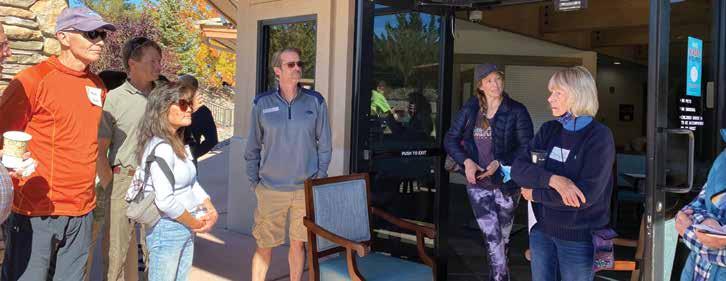
16 minute read
Socials & Events
art guild
Connie Ghysels lulughysels@gmail.com www.ArrowCreekart.wordpress.com
Advertisement
Bridge Club
Dick Eddy eddyrp@charter.net
Chefs club
Carol Steingard sedona1927@gmail.com www.ac-chefs.club
Crafters
Mary Steele marysteele6239@att.net
cycling club
Jeff Foster jeff-foster@sbcglobal.net
former incline residents
Gabrielle Rubsamen-Judd gamaveru1962@gmail.com
hiking club
Mark Steingard sedona1927@gmail.com
mah jongg
Donna Branson renobransons@yahoo.com
men's tennis
Don McConnell dfmcconnell67@gmail.com
motorcycle
Thomas Wroblewski tomwro@sbcglobal.net
pickleball
Don Unruh emailacpc@gmail.com
scale models
Hawley MacLean hawley@hmaclean.com
singles skiing
Stan Jaeger stanjaeger@gmail.com
snow shoeing
Mark Steingard sedona1927@gmail.com
wine lovers
Terry Brodt terrybrodt@comcast.net
women's tennis
Dayna Kaltman teachdk71@yahoo.com
socials & events
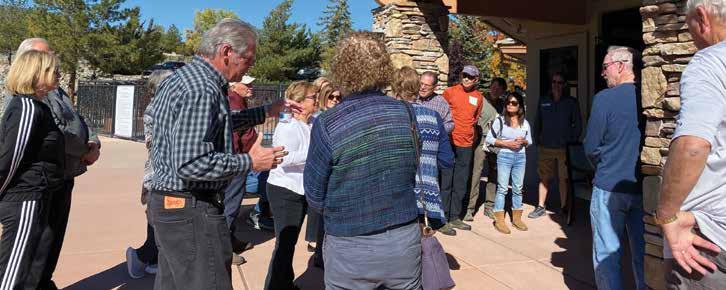

October meet & greet
Saturday, October 16, was a beautiful day. That morning about thirty residents gathered at the Residents’ Center for a Meet & Greet, a chance to meet others, talk with Board members and Board candidates, and learn how to get more involved in the community. The owners of Doughboy Donuts, Marge, and Bob Kenny are ArrowCreek Residents. They kindly donated the most delicious donuts for the event!
The ArrowCreek Social Committee hosts Meet and Greets several times a year. The events are open to all residents, regardless of how long you have lived here. Watch for announcements about future Meet & Greets in this magazine, on the website, and in your email.
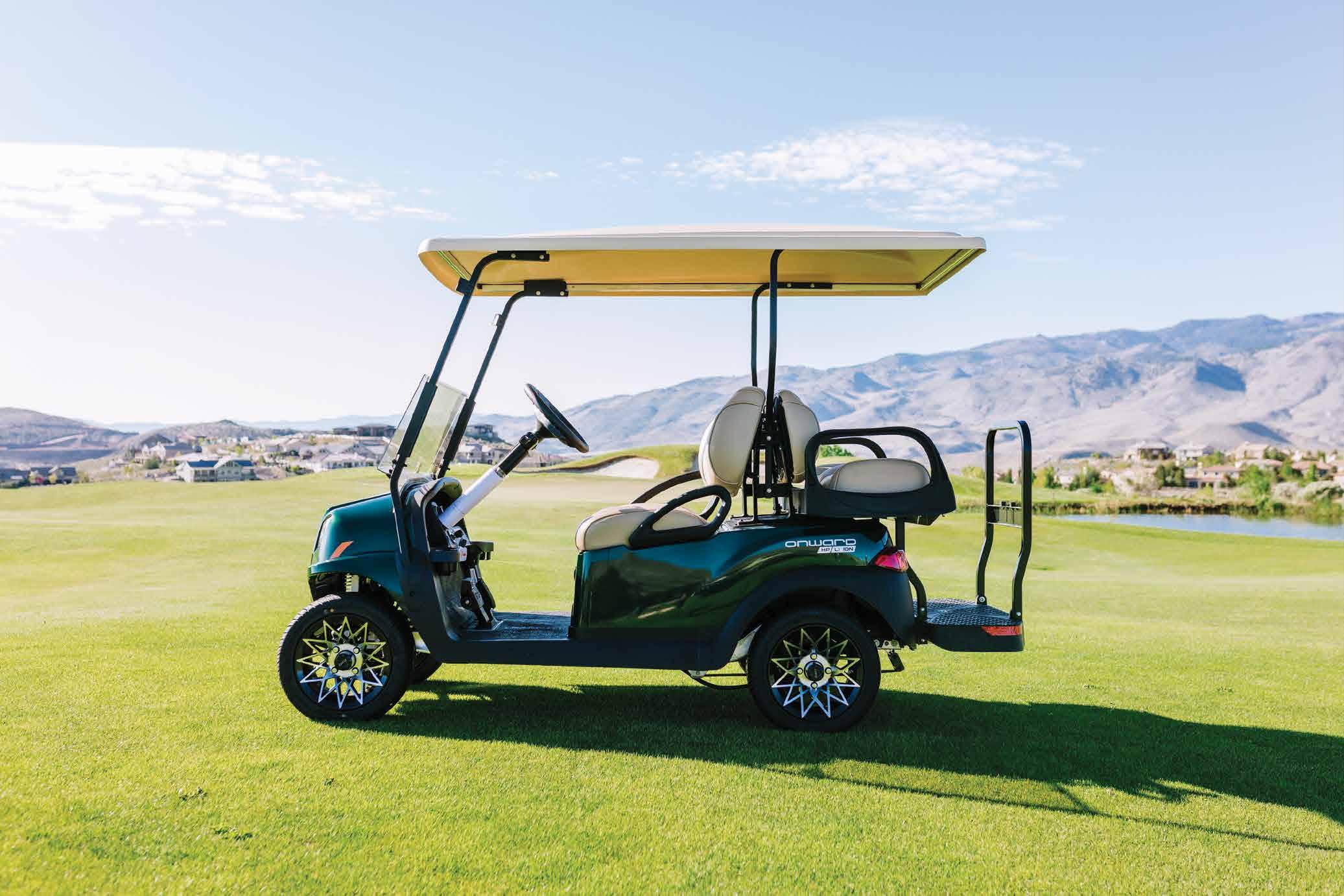



2021 halloween party
On October 29, Nevada Day, a school holiday, the HOA Social Committee welcomed about 150 to the Residents’ Center for the annual Halloween Party. The children and even some parents arrived in costume. It was a perfect fall day, thank goodness, so we could hold the party outside. Activities included five carnival games and also a photo booth, with prizes for the winners. The cotton candy booth was really popular!
When the children and their parents got hungry, there were healthy, pre-wrapped hot dogs, fruit roll ups, granola bars, chips and cheese, and bottled water. Many parents went home thinking they did not have to cook dinner for their kids that night! All kids left with a Trick-or-Treat bag, getting a head-start on Halloween.
A wonderful time was had by all.


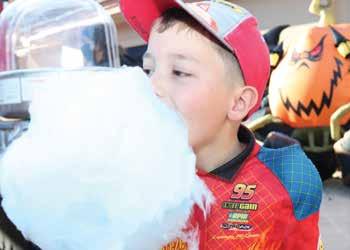

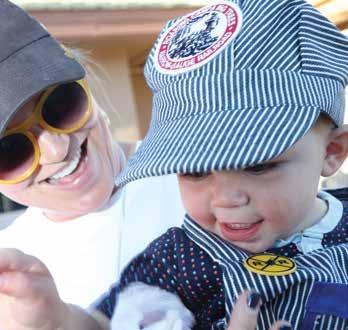




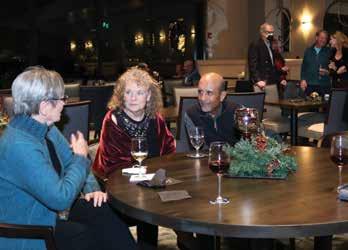



The 2021 ACHOA Holiday Cocktail party excelled in every way! Registrations for the party exceeded all previous years. Contributing factors to the increased attendance may have been that there wasn't an ACHOA Holiday party in 2020 and because this was the first big party in the newly renovated and expanded Event Center at the Club at ArrowCreek. Those who attended got to see the fantastic job the owners have done concerning the event center and the dining room. It is beautiful and both club members and nonclub members were impressed. As a community, we can be proud of our Club. All evening, the wait staff at The Club passed innovative, scrumptious appetizers including crab cakes, coconut shrimp, chicken quesadillas, spanakopita, and others. For those wanting something sweet to finish the evening, the ACHOA provided platters of artisan, locally made Dorinda’s chocolates. Congratulations go to Randi and Bill Johnson, winners of the most creative mask contest!
The event sold out soon after it was announced. The maximum number of attendees had been set at 425 due to budget and capacity. When sold out, the Social Committee began to keep a wait list and set up a process for residents to cancel if their plans changed. Thank you to all residents who used the cancellation process! Many on the wait list took your place. But what happened to those of you who made a reservation and didn't come? Someone would have enjoyed your place. Your absence cost the community $60/person. These are the facts that this community needs to know. These “noshows” give the Social Committee much to think about and consider for future years. There are changes in this event every year, as the community and our social events grow. This year the Social Committee made an exceedingly difficult decision to not offer a holiday option for children. We had multiple reasons: Covid and uncertain vaccination status amongst that age group, the fact that two other events held during the year are specifically focused on children, and staying within the budget allocated to social events by the ACHOA board. We wish you all a wonderful 2022 and look forward to seeing you.

4-point buck sticking his tongue out at me by our patio wall.
MuleDeer
in arrowcreek by susan duncan
For more than fifteen years I have watched many small herds of mule deer come up from the aspen and willow lined Evans Creek canyon to mosey across our property in ArrowCreek as they make their way down to the Steamboat Ditch area and back again. For a couple years, there was a herd of about 19. The last two years, the biggest herd is 15-17 deer. There are many smaller familial groups of 3-5 and a couple young bucks on their own as well. I wondered about how humans have infringed on their migratory path and if there was anything I could do to help them survive. I knew we were in their migratory corridor because of a section in the original Development Agreement with Washoe County and because they were such a frequent sighting on our 2.2 acres of land. We regularly see the larger herd around February and March as they eat the native phlox and clover on our land before they traverse further down the hill. Then there are smaller groups that meander all year long.
I contacted Nevada Department of Wildlife (NDOW) and had an interesting conversation with Cody Schroeder, a biologist and Wildlife Staff Specialist in the Game Division of NDOW. He is involved with Mule Deer and Pronghorn Management. He is also a Nevada representative on the Mule Deer Working Group of the Western Association of Fish and Wildlife Agencies. He sent me several articles and I found a few more online.
The Washoe County documents for ArrowCreek (under DA9-1-932) contain a drawing from September 1993 that shows the Mule
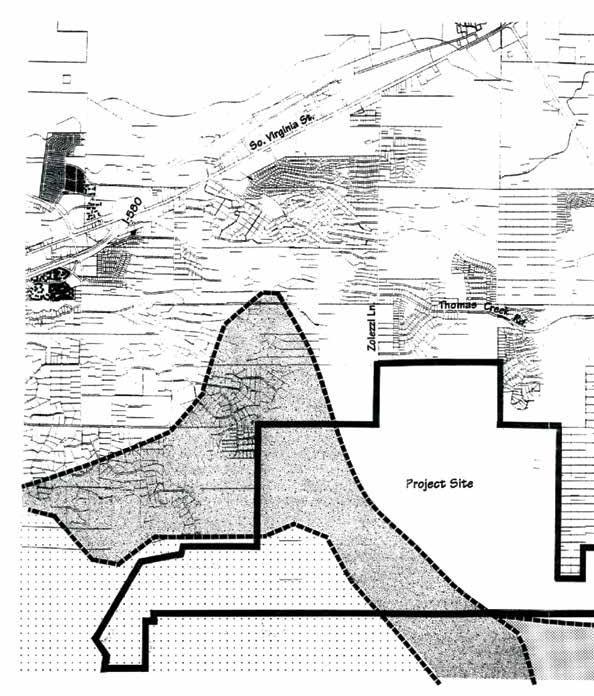
Map of mule deer migration across ArrowCreek to winter range.
Deer winter range that crosses Southwest Pointe, later renamed ArrowCreek. The summer range is shown to be southwest of the Project Site of now ArrowCreek’s acreage. The herd summers in the higher elevations and moves to the lower elevations of the Sierra Nevada mountains to avoid deep snow and wintery conditions of the higher range.
The documentation claims that the herd impacted is the LoyaltonTruckee Herd (so named because they are from the Loyalton-Truckee area). Deer have been known to travel 100 miles or more on their migration journey; however, Cody does not think the Loyalton herd comes this far south. They are probably California deer that summer near Lake Tahoe/Incline Village and then come to Nevada to vacation in ArrowCreek on the Mount Rose alluvial fan for the winter. They may also be an acclimated “resident” herd that uses this range all year long. The migration path may have changed since the early 1980s when the data for this map was probably collected. The NDOW focus tends to be on the larger mass of mule deer versus particular smaller bands these days, so documentation of the smaller herds is scarce. All I know is that we do see several bucks with their posses, does with their fawns, and teenagers on a regular interval.
I found several research papers about the whys of migration. Is it a learned path from the mother or is it “green wave surfing” of looking for edible greens? There is support for both. A study of the migratory paths of Mule Deer in Utah provided me insight into the behavior

of the deer we have watched on our property over the years. It also explains Cody’s use of “resident” herd. In the study, they explained the migration trajectories they identified after they monitored 722 female mule deer over a 2-5 year period. They had multi-year data on 293 deer. Of the 293 deer, 51.2% used more than one unique movement. Deer switched movement patterns 41.9 of the time in successive years.

Decision tree indicating how we categorized movement trajectories into migration strategies for mule deer (Odocoileus hemionus) captured between 2014 and 2019 in Utah, USA. From: Variation in movement patterns of mule deer: have we oversimplified migration?
A round-trip was movement away from the summer range and then back to it. Then the number of visited ranges was determined. Then Continued on page 32
ADVERTORIAL

In today’s world, there is an increasing need for mental health care. All you have to do is look around to see many people struggling from loneliness, isolation, anger, and depression. When emotional and social problems are tackled early on in life, it is easier for an individual to have a healthy relationship with one’s self and others throughout the rest of their life. At LEAD with horses, they prepare young children to become healthy adults who know how to regulate their emotions and have strong relationships through equine assisted education and counseling. They use a unique combination of mental health professionals, equine therapists, and horses to create an approach that is effective and powerful in helping children. One such child is a 10 year boy that recently participated in a group program. When this boy arrived at LEAD with Horses, he was reserved and shy. He was in foster care and in need of confidence and trust in himself and others. He was fearful about being around the horses, lacked confidence in the arena, and asked for one of the team members to be with him at nearly all times. Walter the donkey came straight up to the child in the first session and nudged his head into his chest. The boy laughed, calmed down and instantly bonded with Walter. The next couple of weeks deepened their friendship and helped the child gain the courage and confidence to work with a horse. He acknowledged feeling nervous, but asked another child to work with him. Through this process he learned to identify emotions and voice his need for help. Every time he moved into the arena and began working with the animals, his demeanor softened, and he allowed himself to act like a kid, something that did not come naturally outside of the arena. He laughed, played, and also made space for his fear, self-doubt, and enormous amount of love in his heart. Toward the end of his sessions he was asked, “When do you feel the happiest?” he responded, “When I’m here at horse camp”. LEAD with horses is a non-profit organization, and depends on donations from generous people. There are many ways to help, including monetary donations, supplies, and volunteer time. With help from donors, the program can continue to assist many children in our community.
LIST OF NEEDS:
Horse Care
• Grass pellets • Manure cart •Barn vacuum
Office/Classroom
• Office Chair • Computer • Printer paper • Drawing paper
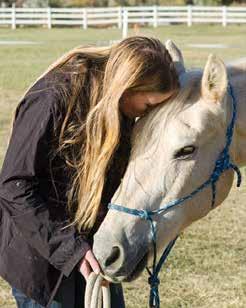



7 Mule deer between ArrowCreek houses.
we get to our “resident” mule deer that basically stay in one range on familiar terrain. The more the mule deer move, the more risk they have of encountering natural and man-induced dangers. “Making one or more round-trips away from the summer range might allow animals to better exploit resources or avoid unfavorable conditions. However, leaving a familiar range is inherently risky, and the risk increases with the number of round-trips taken.” (van de Kerk 2021)
Because migration corridors serve as the critical link between summer and winter ranges, they must be unobstructed by physical barriers and shielded from various forms of development and human disturbance. To reduce the impacts of encroaching housing development on the deer herd, mitigation measures such as leaving habitat suitable open space, limiting fencing and types of fencing and prohibiting dogs from running loose are recommended and happen to be in the ArrowCreek Covenants, Conditions & Restrictions (CC&Rs) and Architecture Design Review Committee (ADRC) Guidelines.
Whether you want to deter deer from your property or not, you still must admit that they roamed the Mount Rose alluvial fan long before our houses existed. We can mutually exist and still live happily ever after. It just takes a little adjustment of thinking. Many homeowners want to annihilate their property of native vegetation for fear of wildfire. If they did so, they also would be removing browsing shrubs for foraging deer and erosion control. Destroying natural habitats has ecological impacts. While purposely feeding big game mammals is against the law per NRS 501.382, there is actually a middle ground for minimizing fire fuels while, at the same time, leaving native edibles for the deer. The number one plant to get off your property is cheatgrass. It is a non-native weed from Asia that has invaded hundreds of thousands of acres of the American West. Cheatgrass invasion has two main impacts to mule deer habitats. First, it eliminates the more palatable and nutritious native perennial grasses and weeds. Second, it is fuel for more frequent and higher intensity wildfires that destroy the native shrublands that are so critical for the diet and cover needs of the mule deer. Before cheatgrass dominated sagebrush-bunchgrass areas, wildfires were rare, even at 90-year intervals. Now cheatgrass infested areas may burn every 6-10 years which makes it harder for native shrubs to reestablish before they burn again. Root systems and seed banks get sterilized. The more frequent wildfires have reduced or eliminated shrubs and other native plants crucial for mule deer forage. Without the kindling of the fast-burning cheatgrass catching debris and dead branches of the shrubs, the native areas of our yards would be less fire prone. The battle for getting rid of cheatgrass on our properties is a valiant effort to support the habitat of the mule deer and the fire safety of our neighborhoods.
Important native shrub species for the mule deer diet include sagebrush, serviceberry, bitterbrush, mountain mahogany (both true and curl-leaf), cliffrose, four-wing saltbush, and winter fat. Unfortunately, these also tend to be high fire risk so they should not be next to structures. Keep them in your native landscape if you have them, but you can trim and shape them. Cut old and dead branches to encourage new growth. The deer like the younger growth. If the plant itself is older, it can withstand more browsing than a younger one, and the younger growth has more water and is less fire prone. Important native weeds or weed-like plants that mule deer like include buckwheat, fringed sagebrush, and phlox. Useful grasses include blue grama, native wheatgrass, fescue, and bluegrass. Aspen trees can also provide cover and food for mule deer. Keep your yard free of pine needles and debris for defensible space.

Cheatgrass in ArrowCreek.
Before we realized we were on a major mule deer trail, we had planted roses, honeysuckle, rose of sharon (hibiscus), and daylilies which the deer have kept trimmed much to the size they were when we planted them in 2004. I cage some of them with chicken wire to actually see flowers bloom. Surrounding neighbors not on the mule deer path have planted the same sort of plants much later and have beautiful specimens that are several feet tall – without cages. In 2004 we had also planted two mountain mahogany shrubs that have been the birthplace of at least two fawns. I have resorted to planting daffodils and alliums to provide color for our garden. The mule deer don’t care for them even though a bud or two is occasionally nipped. The University of Nevada Cooperative Extension has a Fact Sheet-14-06 “Deer-resistant Plants for Northern Nevada” by JoAnne Skelly for other options. We enjoy watching the mule deer and tolerate the damage they do but totally understand that some neighbors think they are a nuisance and hazard. Changes in mule deer habitat because of increased urbanization has led to declines in deer population. Restoring mule deer populations to mid-20th century levels is not going to happen with ever-increasing human populations and human encroachment. I do believe that taking care of our native lands is one way to minimize fire fuels and restore habitat suitability for our urban resident mule deer while not subjecting them to negative impacts of human exposure. See https://www.ndow.org/blog/living-with-muledeer for the new NDOW urban mule deer website.
References: Cox, M., D. W. Lutz, T. Wasley, M. Fleming, B. B. Compton, T. Keegan, D. Stroud, S. Kilpatrick, K. Gray, J. Carlson, L. Carpenter, K. Urquhart, B. Johnson, and C. McLaughlin. 2009. Habitat Guidelines for Mule Deer: Intermountain West Ecoregion. Mule Deer Working Group, Western Association of Fish and Wildlife Agencies.
van de Kerk, M, R. T. Larsen, D. D. Olson, K. R. Hersey and B. R. McMillan, 2021. “Variation in movement patterns of mule deer: have we oversimplified migration?” Movement Ecology, Springer Nature, online August 26, 2021, https://creativecommons.org/licenses by/4.0/.


Custom Jewelry Gemstone Talismans Intuitively crafted for your personal collection

Call Today!

We can help you be your best!
wb baseball & softball
TRAINING CENTER
• One-on-one individualized instruction • Dedicated to help students enjoy the game • Committed to help students develop their skills and achieve their goals • Serving players of all levels for over 25 years • Schedule an appointment today!






